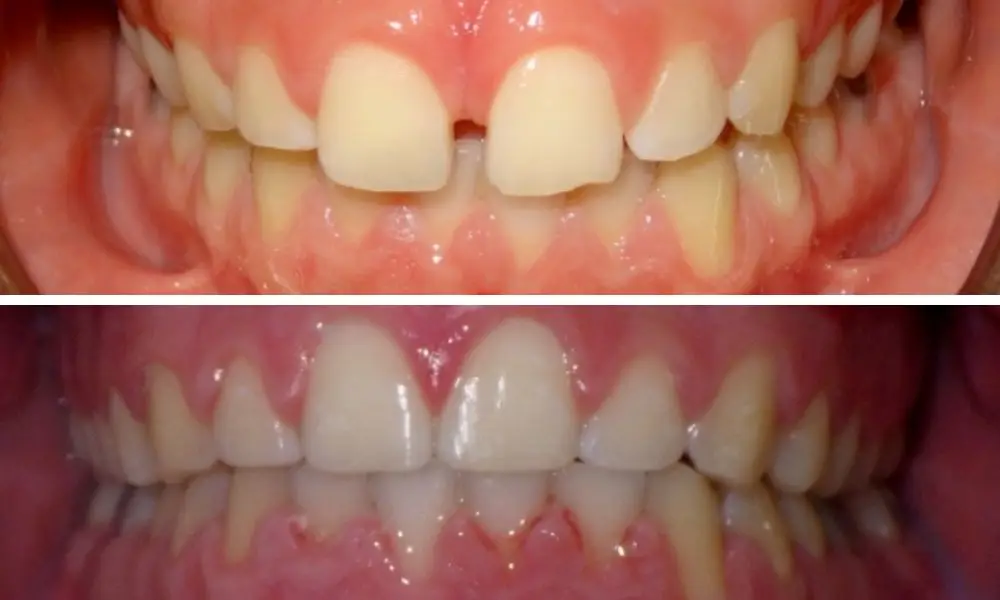Can You Eat Cereal With Braces?
Cereal has been a breakfast staple for decades. Many of us enjoy a nice bowl of our favorite cereals to eat for breakfast. However, if you have braces, you may be wondering if you can enjoy your favorite cereal.

Cost of Braces By Type
| Metal Braces | $1,700 – $7,000 |
| Ceramic Braces | $3,000 – $7,000 |
| Invisalign Aligners | $2,650 – $9,000 |
| Lingual Braces | $5,000 – $13,000 |
| Self-Litigating Braces | $2,000 – $8,000 |
According to a 2018 survey by the American Dental Association, the average braces cost between $4,685 to $6,500 for children. The price for adults is slightly higher at $4,800 to $7,135.
Braces cost varies widely depending on a variety of factors:
As shown above, the type of orthodontic appliance used also contributes greatly to the cost of braces. If you are looking for the most affordable braces treatment option, metal braces are your best bet. Metal braces are the original form of braces treatment and are still commonly used to straighten teeth and create smiles.
Other braces treatments cost more due to factors such as:
Braces costs generally include both the treatment and the orthodontic care. This includes pre-treatment exams, x-rays and imaging, office visits, emergency care, and all adjustments.
Depending on the provider, the cost may include follow-up retention care and the price of the retainers. For some providers, this cost is considered extra and will be charged separately when the retention phase begins.
There are many options for paying for braces. Many orthodontists allow you to pay in monthly installments. You may also be eligible for lower payments thanks to insurance, your HSA or FSA plans, healthcare credit cards, and more. Below are some common ways to pay for braces.
If you can afford to pay for your braces up-front, you may be offered a discount for doing so. Ask your provider if they offer any sort of discount for paying in full.
Your orthodontist's administrative staff will find a regular monthly amount that you can afford to pay once a month. This will divide the full cost of your braces into manageable monthly installments. You may be required to pay over 12, 14, or 24 months.
Many practices offer plans with no money down for qualified patients. This means you can start treatment right away and get billed monthly only for the installment sum. Be sure to find out if the practice offers monthly payments with or without interest. This can make a difference in the final cost of your care.
Credit cards, such as CareCredit or Wells Fargo Health Advantage, offer special financing just for medical procedures. This can help pay for your treatment in full and allow you to pay it off over time.
Be sure to check the interest rates and have a repayment plan prepared. You can also use a regular credit card to pay for braces treatments.
Employer-based dental insurance plans can be used to pay for orthodontic treatment. You can also use a health savings account (HSA), and a flexible spending account (FSA) to cover costs.
Talk to your insurance provider and your orthodontist about how to use this coverage to help you pay for your braces.
Your dental insurance can help cover the average cost of braces.
If you have dental insurance, you may be able to use it to cover some braces costs. This depends on the coverage policies of your insurance provider as well as the type of braces treatment you get.
If your dental insurance does not cover orthodontic care, you may also be able to purchase supplemental orthodontic insurance. There are often long wait times after purchasing orthodontic insurance, which can increase your out-of-pocket expenses. Be sure to gather plenty of information about supplemental orthodontic insurance before you purchase.
With dental or orthodontic insurance, be sure to look into the lifetime maximums offered compared to the cost of your braces. Once the maximum is reached, you cannot use more insurance money and will have to pay the rest out of pocket. Note that some insurance companies offer benefits only for children up to 19 years of age and not for adults.

According to the American Dental Association study mentioned above, adult braces tend to cost between $4,800 to $7,135.
Adult braces cost more because adult teeth are more permanently settled in their positions than children’s teeth. This makes them more difficult to move. This can lead to longer treatment times or more complex treatment options.
Furthermore, adults looking to straighten their teeth wearing braces tend to be interested in the more discreet orthodontic options. Such as ceramic braces, lingual braces, or Invisalign clear aligners, rather than traditional metal braces, which are very noticeable when worn.
Less visible orthodontic treatment options tend to be more expensive, which raises the price of the care.
However, orthodontic treatment for adults has risen in popularity over the last 50 years. According to research by the American Association of Orthodontists, 1 in 3 orthodontic patients is over 18.
Orthodontists are committed to helping patients straighten their teeth affordably. There are now more options than ever for achieving great smiles without stretching your finances.
Medicaid can cover traditional metal braces treatment for qualifying individuals under the age of 18/21 (depending on the state.) However, they are less likely to cover the same treatment for adults.
In order to qualify, the braces treatment must be deemed medically necessary, rather than cosmetic. You will need to visit an orthodontist, who will determine whether your child’s case can be covered by Medicaid/CHIP.
If your child does qualify, Medicaid or CHIP will fully cover the cost of treatment, including:
Depending on the orthodontic providers, emergencies during your braces care may be covered in the cost of visits. Braces emergencies are often easy to treat from home. Some issues may require an office visit, such as a snapped archwire, a loose molar band, or a broken bracket. Emergency visits may also be covered by insurance.
The cost of the orthodontic emergency depends on the treatment required to correct the issue.
Here are the price ranges of some common orthodontic emergencies:
Find out more about treating orthodontic emergencies from home.
Whether or not your insurance covers braces, there are a variety of ways to lower the costs of straightening your teeth:
Look to see if an office near you is running any offers on certain types of braces. They may also run seasonal deals like back-to-school or holiday discounts. Many offices also offer family discounts. Some providers also offer family discounts, so you can save on treating more than one person at a time.
While dentists can straighten teeth with orthodontic appliances, orthodontists receive further specialized training to master the art of orthodontics. For that reason, orthodontists have the most specialized experience, which can lead to shorter treatment times, and lower costs for you. Since they only treat orthodontic patients, they can keep costs low.
Practices that see more patients will often save on materials based on a per-patient basis. A larger orthodontic practice will generally pass those savings onto the consumer. Plus, larger orthodontic practices are staffed with more orthodontists, so you have more flexibility in scheduling office visits.
Make sure retainers and follow-up visits are included. Retainers are necessary to keep your teeth from shifting back. Ask your orthodontist about what's included in the price of braces.
Broken brackets, lost rubber bands, and loose archwires are all some common accidents that may require an emergency visit. Many orthodontic providers include all emergency visits as part of the cost, but they may be extra at some orthodontic practices.
Many offices offer some kind of post-treatment guarantee, such as a Lifetime Smile Maintenance Guarantee. This can help you avoid retreatment costs. Ask about any lifetime guarantees from your orthodontic provider.

Braces are known to transform smiles using the same tried and true methods that have worked for generations. We have compiled several real Diamond Braces patients who have corrected their smiles using braces.
Spacers are generally used for a week or two before braces treatment, to create small gaps between certain teeth. Spacers are usually used on the back molars, where metal bands will be attached. The spacers are made of rubber or metal.
If your orthodontist uses them for your case, you will only wear them for 1-2 weeks. Spacers may feel uncomfortable, like a piece of food trapped between your teeth with braces.